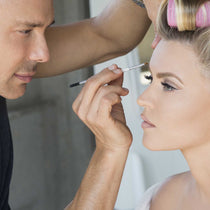Love Enough to Let Them Go
Not A Dry Eye On The Farm
Late in the day, someone pulled up at the kill pen and dropped off a handful of animals that were in critical condition. An S.O.S. went out for immediate pick up - rescue only. Using funds from product purchases, we created a medical and transportation fund for this dear pony who sat quietly in distress, with a back leg clearly pointing in the opposite direction. He had been completely let down by his previous owners and left to suffer. Not only was he in medical distress, but you could see the hooves had not been cut in years and years, and his hair was so completely full of sticker burrs it was as if he lived his entire life alone in a field.
Tough Call
His X rays confirmed the worst. He'd suffered this injury at least 2-3 months ago, with the bone already beginning to re-form itself. Could we do surgery, a splint, amputation – something? We had a long discussion with our veterinarian about quality of life. As a rescue, we want to improve animals' lives. But these were these facts presented to us:
1. At just 9 years old, an un-gelded pony like this should be a spitfire – full of energy, and difficult to load in a trailer. Instead, he stood motionless, eyes nearly closed. It's an indicator of pain. A pony can't talk. But all signs pointed to immeasurable pain.
2. Unlike dogs who can lose a foot or a leg and the paws and bones spread and adapt, equines have solid hooves. And when 1 of 4 is removed, the other 3 have great difficulty adapting. Often the bones in the other hooves turn downward (founder) and will break through the surface. In even the most promising cases of amputation, a 3-legged equine will be confined to laying in a stall, and there is chronic infection at the wound.
3. The emergency veterinarian treating him had performed many surgeries attempting to save million-dollar prize horses with similar injuries. Some through amputation. Some with metal plates added. Not one lived long after surgery. Those that did endured months in a stall, infection after infection, some foundered because the other legs tried to make up for weight bearing down on them... the prognosis for leg injuries in equines is just not good. We called two additional veterinarians that know us, know our mission, know that we will go to the ends of the earth to give an animal a shot at a good life, and everyone agreed, that the kindest thing we could do for him was to humanely euthanize him so that he was no longer in pain. We stayed with him, saying goodbye. It's incredibly difficult, even on the animals that we do not know for long, to love them at first sight, then love them enough to let them go.














